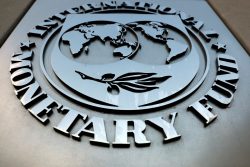It is not a practice for the authorities – the Guyana Geology and Mines Commission or the Office of the Prime Minister – to routinely bring to public attention the various environmentally unsound practices that persist in the far-flung mining locations across the vast interior of Guyana; and since journalists rarely if ever pay visits to these mining locations most of the information that reaches the media comes either from the various Amerindian organizations that have been fighting to curb the worst excesses of the delinquent miners or sometimes – off the record — from official (GGMC) sources, miners and the Guyana Gold and Diamond Miners’ Association.
Both the Prime Minister and the Head of the World Wildlife Fund (WWF) Secretariat in Guyana Dr Patrick Williams said at this week’s Guianas mining forum that recent media reports on the human and environmental consequences of mining activities in the interior regions of Guyana were exaggerated. It is entirely reasonable to assume both of these gentlemen are better positioned than the media to make such a pronouncement. The vast majority of the media reports on mining and the environment do not derive from actual visits to mining locations. This is not to say, however, that the reports are either fanciful or untrue. What is true is that some aspects of some reports may well be imprecise because of journalists’ lack of first hand geographic knowledge of some areas and their limited knowledge of the mining sector and some the manifestations of its environmental impact of mining.
The media’s knowledge of these issues, however, is not so limited that journalists cannot comprehend that there are prevailing mining practices that are hurting the environment and seriously compromising the lives and livelihoods of host communities. Nor is it difficult to understand that some of the more recent excesses like the digging up of the Salbora road and the illegal ‘raids’ at the Omai mine site (which this newspaper reported on last week) are manifestations of what the Prime Minister himself described as a gold “rush” that has sent even more fortune-hunters scurrying into the interior and placed mining ahead of the environment on the scales of priorities of many miners.
Incidents like the recent lawlessness at a section of the area once mined by Omai Gold Mines Ltd – including attempts by some of the miners to divert the Omai river – came to light only after this newspaper spoke with the Executive Secretary of the Guyana Gold and Diamond Miners Association. Interestingly, all of the information provided by Mr Shields was subsequently confirmed by the Acting Commissioner of the GGMC who also put the geography of the area into helpful perspective and disclosed that the GGMC had issued a ‘stop work’ order in the area in question.
From another source we learnt of the prevailing mining frenzy – to which the Prime Minister referred in his presentation at this week’s WWF mining forum – and some of its consequences including the serious pollution of the waterways, the indiscriminate felling of trees in the search for gold and the open pits that get left behind to breed mosquitoes by miners who neglect to backfill the holes.
This week we learnt of the situation at Isseneru a Mazaruni community of around 200 people and Micobie in the Potaro, titled communities that continue to play reluctant host to miners who were there prior to the granting of titles but simply refuse to remove now that the lands have come under the control of the village administrations.
In the case of Isseneru TAMOG President Peter Persaud says that the GGMC has issued ‘cease work orders’ and refused to accept payment for renewal of mining permits. He says that the people of Isseneru and their representatives have engaged both the GGMC and the Prime Minister on the issue but as far as he is aware the miners are still in the area and, moreover, are reportedly issuing threats against the residents that have led to reports being made to the police.
Then there are the various ‘contractual’ arrangements that are made between miners and Amerindian communities many of which, Persaud says, turn out to be poisoned chalices for the host communities since ”these agreements are hardly ever made in good faith.”
We understand too that there are studies that have been conducted that indicate the residents of communities like Isseneru and Micobie have up to double the World Health Organization mercury ‘safe – limit’ in their bodies. As Amerindian People’s Association (APA) attorney-at-law – David James told Stabroek Business these are “real issues” and, according to Persaud a microcosm of “a much bigger problem”.
The media almost certainly does not always get all of the facts (or all of the facts right) about some of the outrages that occur in the gold-mining sector. What is certain, however, is that there is pretty widespread evidence that the aforementioned outrages are far from “exceptions” and that the painstaking efforts of the Amerindian groups to bring an end to the problems are bearing little fruit.
What is also clear is that the authorities do not have the capacity to effectively implement the laws that protect the environment and safeguard the rights of the Amerindians. One imagines too that in communities where administrative structures – including effective policing – are weaker than those in the coastal areas some of the miners – given their economic power – are not without considerable clout.
The point about all this is that while the authorities would certainly be doing a service to both the media and the public if they were to become more forthcoming with information regarding the various environmental consequences of irresponsible and unsustainable mining practices, the media must continue to report as best it can on this critical issue if only to ensure that they remain the focus of public attention. With all the official complaints about exaggeration the option of simply ignoring these critical issues – or waiting for the authorities to decide what to make public and when to do so – is simply not a viable one.








